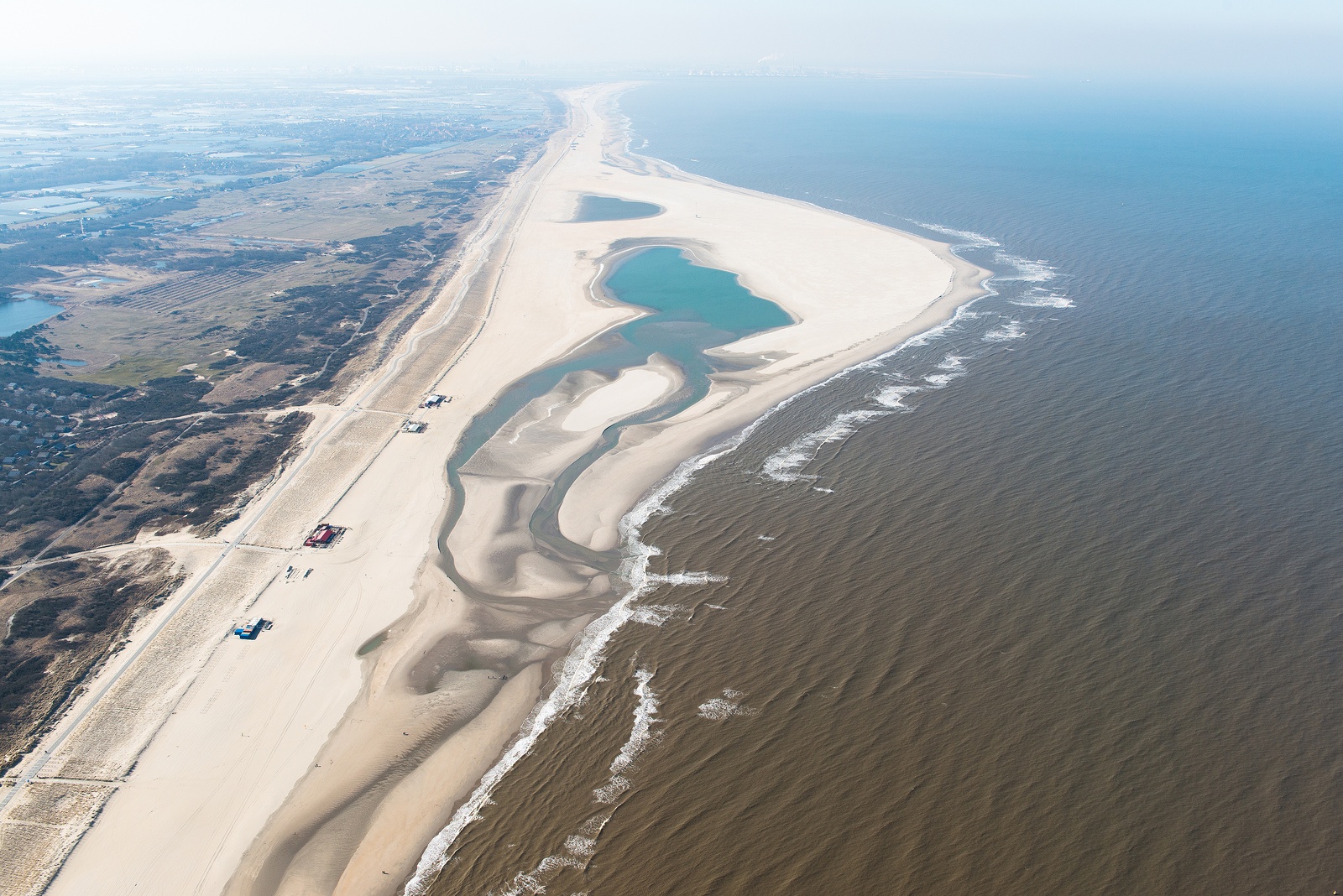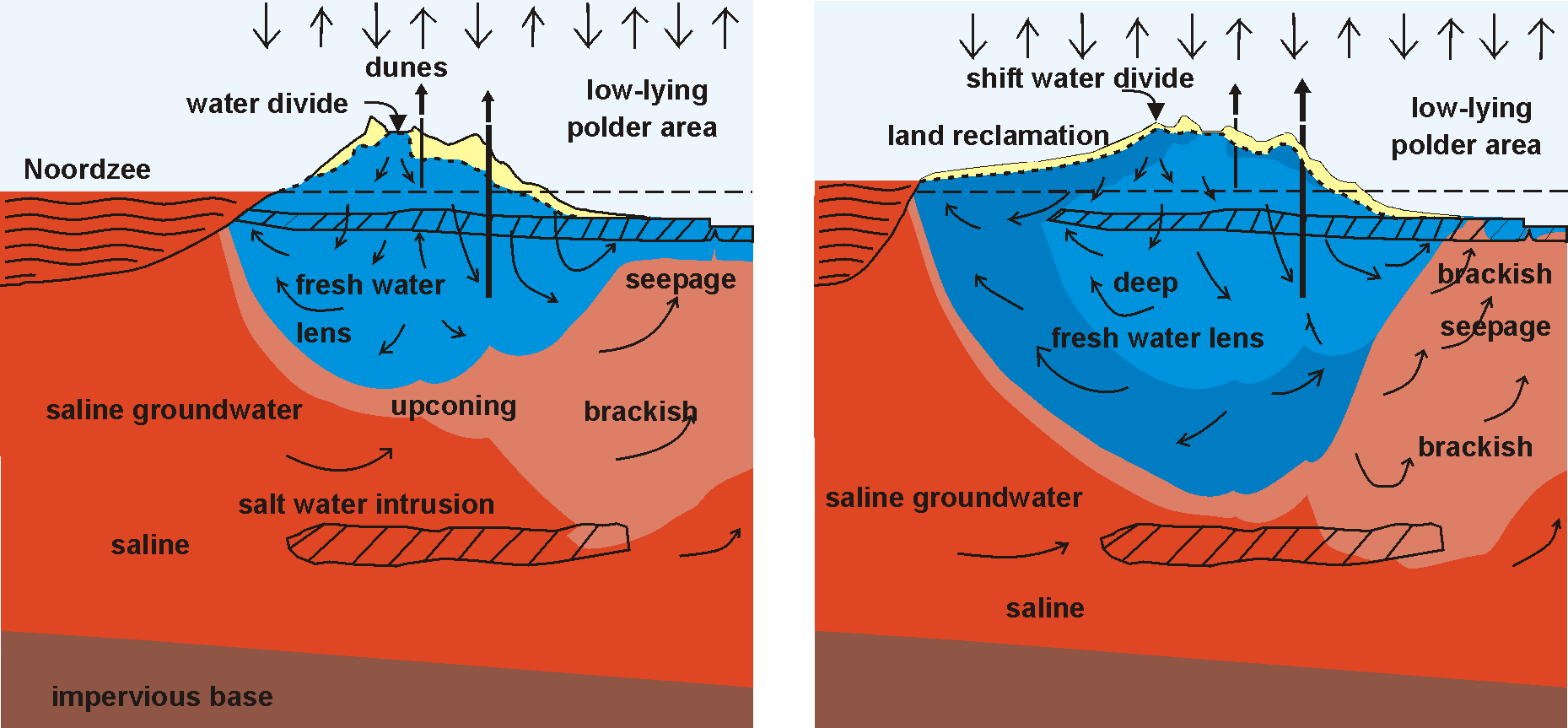Building with nature
The Sand Motor is an artificial hook-shaped peninsula: it extends one kilometre into the sea and is two kilometres wide where it joins the shore; it was created by the Ministry of Infrastructure and the Environment and the province of South Holland on the coast near Ter Heijde in 2011. Natural processes should spread the 21 million m3 of sand needed for this across the Delfland Coast in coming years. In this way, the Sand Motor should ensure that the coastal defences are kept intact, but will also create new opportunities for nature development and recreation. If the Sand Motor works according to expectations, sand replenishment will not be necessary for twenty years, something that was previously needed every five years.
Source: TUDelft
NatureCoast
The understanding and management of large-scale coastal systems as a basis for the sustainable design of deltas is a global social challenge and a subject that has not been scientifically explored as yet. If this approach to nature-driven sand nourishment proves successful in the Netherlands, it can be employed elsewhere. A precondition for this is a good knowledge of morphological, hydrological, geochemical, ecological and social processes involved in such a large-scale project and the translation of these into more general practical guidelines.
The objective of STW NatureCoast is to supply this, with answers to a variety of questions such as: what are the effects of such a project on coastline creation both locally and further afield, what about the safety of bathers, what will happen to the dunes, what is the effect on biodiversity and the ecosystem, what will happen to the groundwater and how does such a project need to be managed?
Source: TUDelft
Period: 2013-2017
- see also http://geoblog.weebly.com/expedition-zandmotor
- Poster at AGU 2014: Modelling Changing Morphology and Density Dependent Groundwater Flow in a Dynamic Environment: Sand Motor
- Progress report 2015 Departments of Earth Sciences and Physical Geography
- Nieuwsbrief September 2014
Introduction
The pilot Sand Motor creates a dynamic environment along the coastline of the Netherlands, in which (continuous) changes in the distribution of fresh and salt groundwater take place. Although the magnitude of the spatial and temporal changes in the density of the coastal groundwater is not known beforehand, it creates an ideal circumstance for the advancement of our knowledge on seawater intrusion processes.
The research subjects of the PhD are chosen in accordance with the below mentioned objectives:
- develop tools to understand and predict the effects of the Sand Motor and similar mega nourishment’s on fresh water availability in the dune-beach system
- make a significant contribution to the scientific knowledge on seawater intrusion processes and the modeling of variable-density processes in real situations
Based on these objectives, the expected changes in the distribution of fresh and salt groundwater and the interdisciplinary character of the Sand Motor project five research subjects are defined:
- Development of the fresh-salt water mixing zone/interface
- Effect of tides and storm surges on the fresh-salt water mixing zone/interface
- Uncertainty analysis
- Possibility to increase coastal fresh groundwater reserves
- Interdisciplinary (hydrology, geochemistry, ecology, morphology)
More Information
Ir. Sebastian Huizer
sebastian dot huizer at deltares dot nl
Dr.ir. Gualbert Oude Essink
T +31 (0)6 30550408
gualbert dot oudeessink at deltares dot nl
Prof.dr. Marc Bierkens
marc dot bierkens at deltares dot nl







